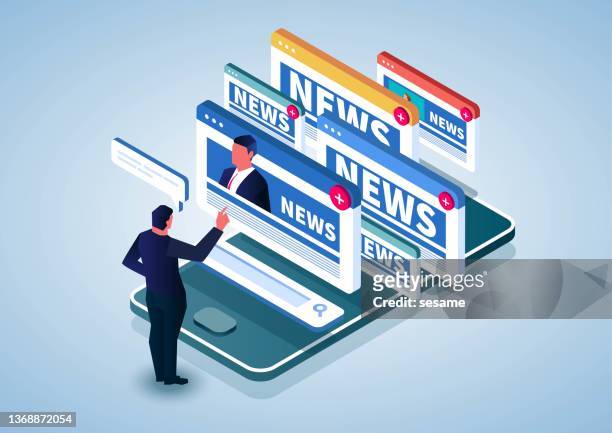Discover the most up to date Trends and Insights in News Online Today
The landscape of journalism is advancing swiftly in the electronic age. Wire service are significantly taking on a digital-first technique, focusing on internet content and mobile optimization. This shift not only affects just how stories are informed however likewise affects the techniques used for circulation and involvement. As new technologies arise, the implications for both journalists and target markets are considerable. What does this mean for the future of information consumption?
The Change to Digital-First Journalism
As standard print media proceeds to decline, lots of information companies have accepted a digital-first strategy to journalism. This change mirrors a broader acknowledgment of transforming customer practices, as target markets progressively transform to on the internet systems for news consumption. Publishers are currently focusing on online web content, enhancing write-ups for smart phones, and employing data analytics to recognize reader preferences much better.
In this developing landscape, speed and accessibility have become critical. Newsrooms are restructuring their operations to deliver timely updates and damaging information directly to digital target markets. In addition, social media sites has emerged as an essential distribution network, enabling organizations to engage with viewers and intensify their reach.

Accepting Multimedia Storytelling
While standard text-based articles remain crucial, wire service are significantly welcoming multimedia narration to engage audiences better. This technique incorporates numerous styles, consisting of pictures, video clips, infographics, and interactive aspects, enabling a richer narrative experience. By leveraging multimedia, reporters can catch complicated tales and present them in such a way that resonates with diverse target markets.
Multimedia storytelling caters to the modern-day consumer's choice for fast, absorbable content. Involving visuals and sound not just enhance understanding but likewise promote psychological actions, fostering a much deeper connection to the news. Many organizations are utilizing platforms that allow smooth assimilation of these aspects, making tales more easily accessible on mobile devices and social media sites.
As innovation advances, the potential for development in multimedia narration remains to expand, presenting brand-new chances for narration that can adjust to the transforming landscape of information usage. This fad underscores the need for wire service to remain relevant in an increasingly visual world.
The Function of Social Network in News Distribution
Social network has changed the landscape of information circulation by enabling quick details sharing that can get to millions in secs. This immediacy cultivates distinct audience engagement strategies, as systems permit customers to interact straight with news web content. Nonetheless, the frequency of false information additionally emphasizes the important demand for efficient fact-checking devices in this electronic age.
Rate of Info Sharing
How has the introduction of social networks changed the landscape of news distribution? The rate of information sharing has actually sped up substantially, enabling news to get to audiences almost immediately. Systems like Twitter, Facebook, and Instagram permit individuals to disseminate updates in real-time, frequently outmatching typical media electrical outlets. This immediacy has shifted the characteristics of news intake, with damaging tales often coming from on socials media prior to being grabbed by developed information companies. The viral nature of social networks amplifies the reach of news, enabling stories to acquire grip rapidly and influencing public discussion. However, this rate also increases concerns about misinformation spreading unattended, highlighting the need for vital evaluation of sources in an era where the demand for fast news is ever-increasing.
Audience Interaction Strategies

False information and Fact-Checking
As false information spreads rapidly throughout social media sites systems, the requirement for effective fact-checking has actually become progressively crucial in news circulation. Social network's duty in sharing details has improved how news is shared, often focusing on speed over accuracy - stnews.live. This setting creates productive ground for incorrect narratives to flourish, bring about public confusion and mistrust in genuine news resources. Fact-checking organizations have actually emerged as important gamers in combating misinformation, using strenuous methods to verify insurance claims and advertise transparency. Collaborations between news outlets and social media firms are crucial in developing tools that determine and flag incorrect material. Ultimately, fostering media literacy amongst individuals is significant, encouraging them to discern credible info in the middle of the frustrating noise of the digital landscape
The Rise of Registration Designs
The increase of membership designs in on the internet information has transformed the media landscape, offering publishers a sustainable earnings stream in the middle of decreasing advertising profits. As target markets come to be a lot more critical concerning the top quality of information they take in, many are prepared to pay for trustworthy web content. This shift has actually resulted in the introduction of numerous registration rates, accommodating different target market needs and preferences. Some platforms provide unique material, while others provide ad-free experiences, boosting customer interaction.
Furthermore, the subscription design has urged technology in storytelling and multimedia discussions, attracting a more comprehensive target market. Publishers are increasingly leveraging analytics to understand customer behavior, tailoring their offerings to maximize retention and complete satisfaction. stnews.live. This trend not just equips wire service to purchase quality journalism yet additionally promotes a deeper relationship in between publishers and viewers. As the go to website landscape remains to progress, subscription versions are likely to play a critical function fit the future of news intake
Fact-Checking and Combating Misinformation
Dealing with false information has actually ended up being a vital priority for information companies in the digital age. As incorrect narratives multiply across social networks and on the internet platforms, the honesty of journalism encounters unprecedented obstacles. News outlets are progressively buying fact-checking initiatives to assure that the details they distribute is exact and reputable. Collaborations with independent fact-checking agencies have emerged as a typical method, allowing wire service to validate cases and supply transparency to their audiences.
Furthermore, media proficiency campaigns aim to enlighten the general public on recognizing false information, encouraging readers to critically examine the sources of their information. Advanced innovations, such as AI-driven devices, are additionally being discovered to improve the fact-checking procedure. Despite these efforts, the rapid spread of misinformation positions a continuous risk, highlighting the requirement for continual vigilance and advancement in combating fallacies while maintaining journalistic criteria and trustworthiness.
The Impact of AI and Automation on News Reporting
While technology continues to develop, AI and automation are progressively transforming information coverage, improving how reporters collect, analyze, and present info. These developments enable the rapid handling of large quantities of data, permitting wire service to identify trends and produce insights much more successfully. Automated tools can assist in generating regular information short articles, maximizing reporters to concentrate on extensive coverage and investigatory work.
AI-driven formulas improve customization, tailoring news feeds to private preferences and enhancing audience engagement. However, the reliance on innovation raises issues regarding accuracy and the capacity for predisposition in automated coverage. Reporters have to browse these challenges while keeping journalistic stability.
Inevitably, the integration of AI and automation is positioned to reinvent the news market, making it important for specialists to adapt and establish new skills in this progressing landscape. The future of information reporting will rely upon an equilibrium between human understanding and technical development.
Often Asked Questions
Just How Do News Organizations Measure Audience Interaction Online?
News companies measure target market engagement online through analytics tools that track find this metrics such as page sights, time invested in short articles, social media shares, and comments. These insights aid customize web content to far better meet target market interests and preferences.
What Are the Conveniences of Subscribing to Several News Sources?
Registering for multiple news resources boosts info diversity, decreases bias, and promotes critical reasoning. It allows people to compare perspectives, stay informed on various subjects, and encourages an all-round understanding of current occasions and issues.

Exactly How Can Viewers Determine Trustworthy News Resources?

What Skills Are Crucial for Aspiring Digital Journalists?
Ambitious digital reporters need strong writing, critical thinking, and study abilities. They have to additionally be skilled in multimedia storytelling, comprehend audience engagement, and navigate social media efficiently to supply timely and precise news in a digital landscape.
Just How Do Formulas Influence the News We See Online?
Algorithms greatly affect the news individuals run into online by prioritizing web content based on customer behavior, involvement metrics, and preferences. This procedure can create echo chambers, forming perceptions and restricting direct exposure to diverse perspectives and information.